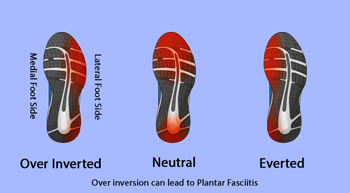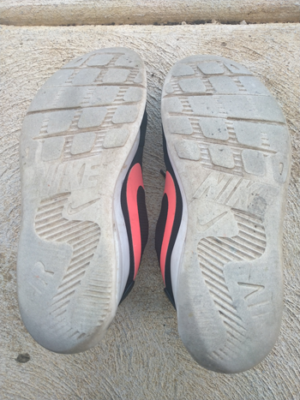Plantar Fasciitis is a foot condition that can cause severe pain when walking or standing.
Pain may be more intense in the morning when you step out of bed.
If you ever had plantar fasciitis you will well know, that is not a fun thing to deal with.
How to fix plantar fasciitis?
In most cases, corrective exercises are the best way to retrain the foot and heal it once and for all from this condition.
In this blog post, I talk more in detail about exercises for plantar fasciitis.
How does Plantar Fasciitis manifest itself?
Plantar Fasciitis manifest itself when the load of the foot is predominately put on the outside of the foot or on the back of the foot.
It is the case we talk about an over-inverted foot, indeed a foot that is overloaded on its lateral portion.

By doing so, the big toes flexor, the muscles that connect the big toes to the heel, get inflamed.
As per consequence, pain does manifest below the heel.
“It feels like if I got glass under my feet” someone that offers this condition would say.
Plantar fasciitis demographic.
- People who spend a long time standing up/walking (waiters)
- Runners (who run with a heel strike)
- Pregnant women (due to the abundance of weight)
The foot is a complex body part.
Indeed, the foot contains 29 muscles, 26 bones and 30 joints.
Therefore if not loaded correctly, the consequence can lead to major body musculoskeletal dysfunctions and unbalance.
As already mentioned during the blog about the Fascia line, unbalanced feet can reproduce tension up to the back and shoulders.
Plantar fasciitis functional test.
A simple test that we do as massage therapists is to passively extend the big toes. (Windlass Test)
If pain is reproduced on the heel, the test is positive.
Therefore, this test tells us that the big toes, which most luckily would not even extend to their full range (65°), are not used when standing and or walking.
That’s why is weak and tight.

How can massage help reduce plantar fasciitis pain?
At Melbourne Massage and Treatment, Myotherapy, Remedial Massage or Thai Massage can help reduce the tension along with the foot’s supinator muscles, which are responsible for over-invert the foot.
That’s one of the reasons why the body weight gets overloaded on the lateral side of the foot.
Regarding MLD, it can be most beneficial to reduce the inflammation within the plantar of the foot and help manage the pain.
But as previously mentioned, massage can help in reducing the symptoms, and improve mobility.
Where for full recovery, corrective exercises are essential.
Was this post helpful? If you are suffering from Plantar Fascitis and would like to find a way out of the pain, book now your next appointment with Melbourne Thai Treatment.
Here on the right side, is an example of a pair of shoes, for someone who suffers from plantar fasciitis.
As you may notice, the lateral portion of the show is completely worn out, where the medial portion, is nearly touched, especially at the big toes area.
So back to the fact, that the big toes are what should drive the foot along the strike motion if that shoe area is untouched, it means that person is not loading any weight on there.
Footwear examination can be also used to identify weight balance in the foot area.